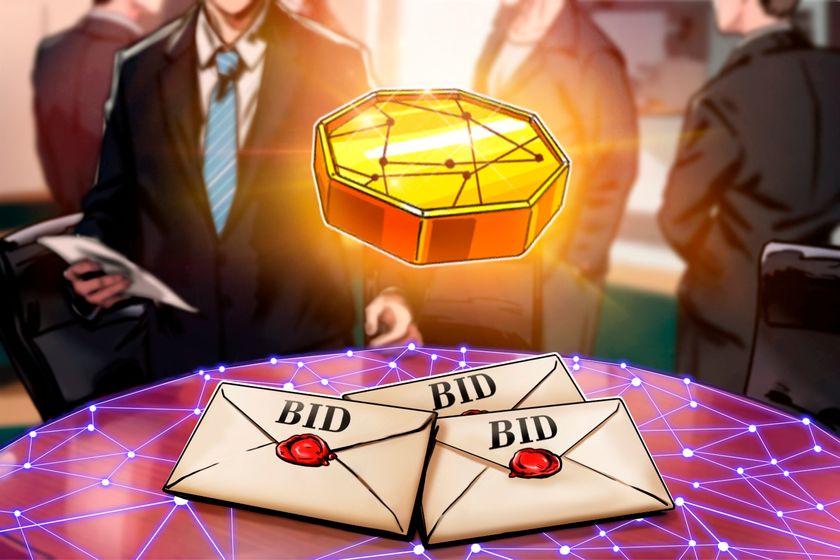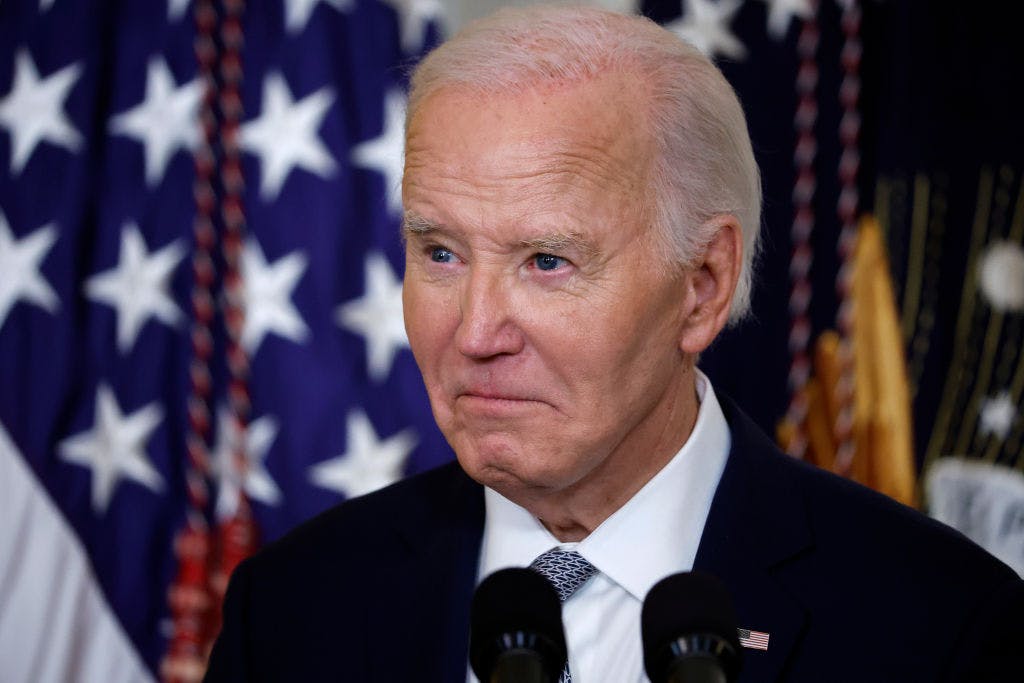What is a sealed-bid token launch?

Published on Saturday, May 3, 2025 by Cointelegraph | Found on Glideslope.ai
What are the various methods for launching crypto tokens? Launching a new token is a critical step for any blockchain project. Token launches enable projects to offer their native assets to early users, investors or supporters while securing capital or encouraging community growth. From initial coin offerings (ICOs) to fair launches and airdrops, each approach carries different levels of transparency, accessibility and risk. Since projects differ in their goals and target communities, several token launch models have evolved over time. Some focus on decentralization and wide community offering, while others aim for optimized fundraising or targeted allocation. Elements such as market swings, bot interference and regulatory pressures influence how tokens are brought to the market.The sealed-bid token launch is a growing trend in this crypto fundraising landscape. Unlike public presales or airdrops, where participants see pricing or allocation terms in advance, sealed-bid models keep each bid confidential until the process ends. This approach is increasingly favored for enabling better price discovery, limiting front-running and curbing manipulation, especially for in-demand tokens.Did you know? Sealed-bid auctions are a crypto twist on traditional finance. They have been used for government bond sales and initial public offerings (IPOs). Now they are redefining token launches by hiding bidder-related information and transparency. Sealed-bid token launch, explained A sealed-bid token launch is a method of distributing cryptocurrency tokens where participants submit private bids without knowing what others are offering. This approach, derived from traditional sealed-bid auctions, involves participants offering secret bids, and the highest bidder typically wins. Auction systems, such as sealed-bid launches, are increasingly built on blockchain platforms like Ethereum, using privacy-enhancing technologies such as Zama’s fhEVM (fully homomorphic Ethereum Virtual Machine) to ensure confidentiality and fairness. Unlike open auctions, where public visibility can escalate prices through bidding wars, sealed-bid formats prevent strategic bidding based on competitors’ actions. In crypto, a sealed-bid token launch leads to fair and transparent token allocation, minimizing price manipulation and front-running. Systems enforce a single bid per participant by leveraging cryptographic techniques like commitments and smart contract logic to prevent multiple bids and enforce payment obligations. Each participant specifies desired token quantities and prices. After the bidding window closes, bids are revealed and assessed using predefined rules, like clearing prices or allocation tiers. This method often reduces bot interference and promotes equitable access during high-demand launches.A key feature of a sealed-bid token launch is its “one-shot” bidding process. Bidders cannot revise their offers or view others’ bids beforehand, which sets up a level playing field. However, it also brings in strategic uncertainty, as participants must estimate optimal bids without cues about other bids. In April 2024, Conor McGregor fundraised for his memecoin REAL using a sealed-bid launch. The mixed martial arts icon introduced the fundraising through a sealed-bid token auction to prevent bots and snipers from manipulating the sale. The project hoped to promote transparency and integrity in a space often plagued by front-running and rug pulls.While the project didn’t disclose token lock-up details, the sealed-bid format and focus on long-term engagement suggest a strategic attempt to execute a transparent and more community-driven launch. How do sealed-bid token launches work? Sealed-bid token launches follow a structured process that minimizes the chances of manipulation and ensures transparency. Here is how the process usually unfolds:Step 1 (Project announcement): The crypto project typically announces the sealed-bid token sale through its official website, social media channels like X, or platforms like Binance Launchpad. It outlines details such as the number of tokens available, bidding timeline, minimum and maximum bid limits, and the process of token allocation.Step 2 (Private bid submission): Participants submit bids to an auctioneer on the platform by providing secret bids before a deadline. Each bid includes the desired token quantity and the offered price. Participants cannot view other bids, ensuring privacy and reducing strategic manipulation.Step 3 (Bid locking): Once submitted, all bids are locked. This prevents users from changing or withdrawing their bids, reinforcing transparency.Step 4 (Token allocation): Post deadline, the smart contract processes all bids. Tokens are distributed either to the highest bidders or through a pricing model like a clearing price or a tiered allocation. Lower bids may receive a partial allocation or a refund.In McGregor’s fundraising, participants submitted private bids in USDC (USDC) during a limited 28-hour window without knowing what others were offering. Once the auction closed, bids were ranked, and tokens were allocated to the highest bidders until the supply ran out. Such auction systems function on a smart contract that ranks all offers, calculates the cutoff price, and allocates tokens to qualifying bidders. Excess funds are refunded automatically. This onchain process eliminates the need for intermediaries, offering immutability and trustless execution. Advantages of sealed-bid token launches Sealed-bid token launches offer an alternative to other models of token sales. This format has gained popularity in crypto, thanks to its potential to create more balanced token distribution and pricing.Transparency: While individual bids remain hidden during the process, all bids and allocations are revealed after the deadline via smart contracts. This ensures onchain verifiability and trust.Reduces gas wars and front-running: Unlike first-come-first-served launches where users race to submit transactions, sealed bids are submitted over a set period. It reduces congestion and the risk of bots exploiting faster access.Encourages fairer price discovery: Since bids are placed without seeing other offers, participants bid based on perceived token value. This mechanism leads to a more organic price that reflects market demand rather than hype or manipulation.Minimizes whale dominance: Sealed bids make it harder for large players to take tokens by simply outbidding small participants in real-time. Prevents manipulation: By removing live price visibility, sealed-bid launches reduce the chances of orchestrated pump-and-dump behavior. It discourages collusion of bidders or biased decisions on the part of the project.Did you know? Sealed-bid launches may evolve with decentralized identity tools. A world might emerge where only verified wallets can bid — combining privacy, fairness and compliance in one go. Risks and limitations of sealed-bid tokens Although sealed-bid token launches introduce a range of benefits, they also entail various risks and compromises. These issues can affect both project teams and participants:Opacity at the initial stage: Since bids remain confidential until the sale concludes, some users might feel lost, unaware of what other people are bidding.Complexity: Sealed-bid auctions can be complex and less transparent to average investors. This complexity may deter participation, especially from those unfamiliar with such mechanisms.Less suitable for small-cap projects: Small-cap projects generally lack an established community. Moreover, small-cap projects rely on viral marketing and word-of-mouth to gain traction, but the closed environment of sealed-bid auctions can dampen momentum.Blockchain-specific risks: As the whole process is executed onchain by a smart contract, blockchain-specific risks such as malfunctioning code and an attacker breaching the network are always present.Risk of underfunding: If the project doesn’t attract enough competitive bids, which is common with lesser-known tokens, it may fall short of funding goals. McGregor’s REAL could raise only 39% of its target.The REAL memecoin, backed by McGregor and launched through a sealed-bid auction, failed to meet its fundraising target, securing only $392,315 — approximately 39% of its $1.008 million goal. Several external factors played a significant role in this outcome. Several external factors contributed significantly to this outcome. Chief among them was the broader downturn in the cryptocurrency market, which coincided with the token’s launch and led to a generally risk-averse investment environment. This was compounded by growing skepticism toward memecoins, as investors became increasingly wary following a series of high-profile scams and failed projects in the space. The celebrity endorsement, while attention-grabbing, may have also backfired — many investors viewed McGregor’s involvement as superficial and questioned the project’s long-term credibility. Additionally, the token’s design raised red flags, particularly its 12-hour unlock window, which resembled patterns seen in pump-and-dump schemes. A lack of transparent communication and insufficient community engagement further weakened investor confidence. While the sealed-bid auction format is designed to ensure fairness and reduce manipulation, its complexity may have posed a barrier to broader participation, particularly among retail investors unfamiliar with the mechanism. Use cases of sealed-bid tokens in crypto and future potential Sealed-bid token launches offer a unique approach to fair token distribution. These launches are gaining attention as an alternative to traditional public sales or airdrops. Their design ensures privacy and minimizes manipulation during high-demand token sales.Here are some prominent use cases of sealed-bid tokens in crypto that reflect their future potential:DAO fundraising and decentralized launchpads: Sealed bids can enhance transparency in fundraising campaigns by decentralized autonomous organizations (DAOs), thus boosting their credibility. The sealed-bid format reduces front-running and increases trust. Future decentralized launchpads may adopt similar systems to build credibility and avoid hype-driven token launches.KYC and identity integration: As compliance becomes more critical, sealed-bid systems could integrate with Know Your Customer (KYC) or digital identity verification layers. This would allow only verified participants to bid, reducing Sybil attacks and increasing regulatory confidence. Such integration could attract institutional investors and expand access to compliant, fair token sales.Effective for scarce supply tokens: Sealed-bid auctions are most effective when distributing tokens with limited supply. By hiding bid amounts until the auction ends, this method encourages genuine price discovery and prevents bots or whales from dominating the sale.As the crypto space matures, sealed-bid launches may become a standard for transparent and inclusive fundraising.
Pulse AI Analysis
Score: 23.79
Sentiment Score: 23.79 - Leaning optimistic.
This analysis was generated using Pulse AI, Glideslope's proprietary AI engine designed to interpret market sentiment and economic signals. Results are for informational purposes only and do not constitute financial advice.








